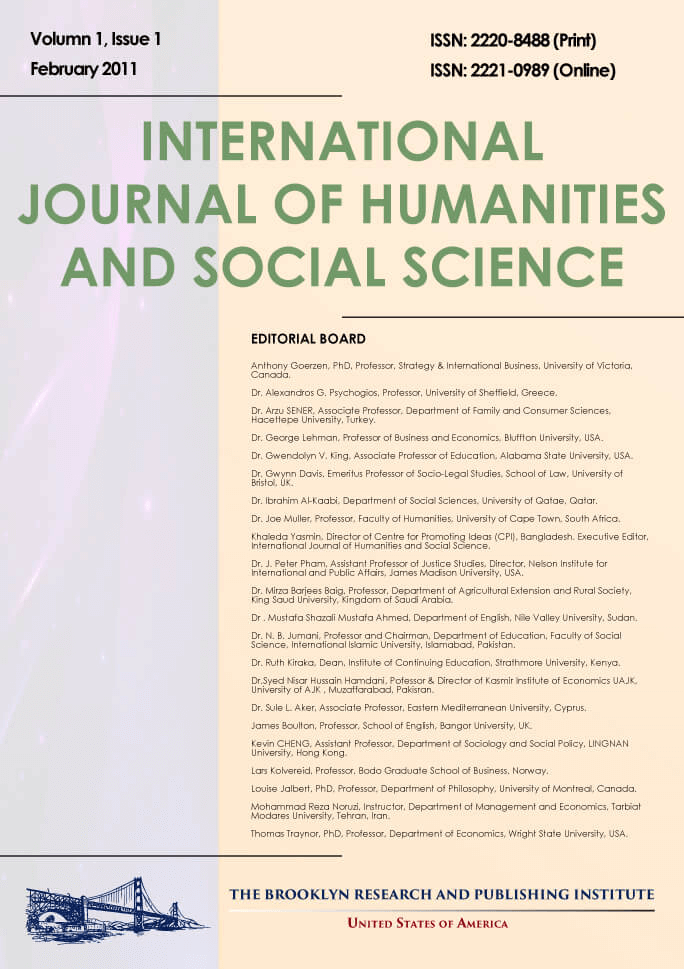A Metaphorical Study on Teaching Individual Creativity in Asia: Indian ālāp and Vietnamese D?o
Gisa J?hnichen, Chinthaka Prageeth Meddegoda (MMus.)
Abstract
Societies and cultures in Asia are everywhere strongly reflected through ways and strategies of transmitting
performing arts such as music and dance. In this study, we take the transmission of some essentials in music
tradition from two different places in Asia, namely India and Vietnam, as a metaphor to be further applied on
cultural and social analysis in order to achieve a better understanding of how creativity is taught and culturally
established. Indian music is asserted as a Gurumukhi Vidya (Guru centered science) in musical treatises found in
India. In the learning process, both Guru and disciple continue their duties for each other which are very
necessary to construct a suitable cognitive environment within both sender and receiver. The process of
transmitting knowledge might be successful as far as the teacher gains satisfaction and a real impression on the
student and at the same time by the student’s behavior and capability of receiving and applying knowledge.
Similar yet different processes can be observed with teaching in the Vietnamese music tradition. ālāpis a very
important part in north Indian classical music as well as the D?o in the Vietnamese music tradition as they
dominantly create the mood of a Rāga or a Di?u1 respectively in an improvisatory manner that demands a high
input of individual creativity. Teachers usually initiate teaching after providing a brief introduction of basic
elements. It is essential that students should follow first every phrase in a parallel way as the teacher articulates.
This process is continued until the students understand the approximate picture of the Rāga or Di?u. Subsequently
the teacher allows the student to improvise in his own way by keeping to the rules thus a student develops
creativity through developing individuality. The final outcome is then an improvisation. Nevertheless, some
contradictions in transmission and perception can be stated such as between the supposedly “free” in an
improvisation and the strict way of teaching the “free”. So, individuality and creativity develop in a process of
tension between rules and breaking rules. Metaphorically, we can see strong parallels to other subjects of
transmitting social and cultural patterns of communication that are perceived differently from the perspective of
the West and East. In discovering cultural individuality in dealing with creativity, social developments can be
seen much clearer and concepts of creative developments could be more effectively reasoned within the societies
concerned. Though this study cannot be comprehensive in direct application of musicological findings on social
behavior, it may help to open up new interdisciplinary ways in conducting social analysis, mainly to provide a
methodological path in recognizing possible stimuli for future creativity in different Asian societies.
Full Text: PDF
International Journal of Humanities and Social Science
ISSN 2220-8488 (Print), 2221-0989 (Online) 10.30845/ijhssMENU
Call for Papers
The Brooklyn Research and Publishing Institute (BRPI) invites academics, scholars, researchers, and professionals from around the world to submit their manuscripts for publication in our wide range of highly esteemed peer-reviewed academic journals.
Read more...Recruitment of Reviewers
The Brooklyn Research and Publishing Institute (BRPI), a distinguished international publisher of open-access academic journals, is currently inviting qualified scholars to join its esteemed pool of peer reviewers.
Read more...
Visitors Counter
23992593
| 8019 | |
| |
6490 |
| |
8019 |
| |
369552 |
| 23992593 | |
| 391 |
